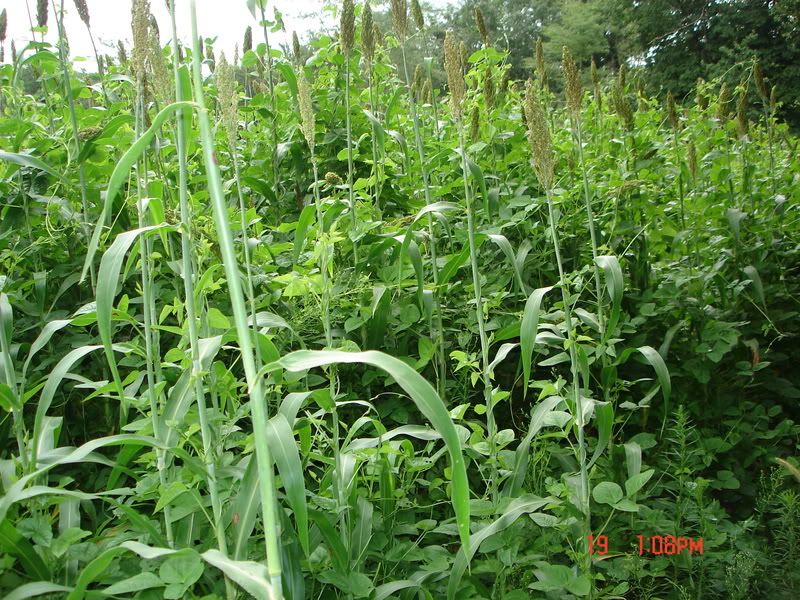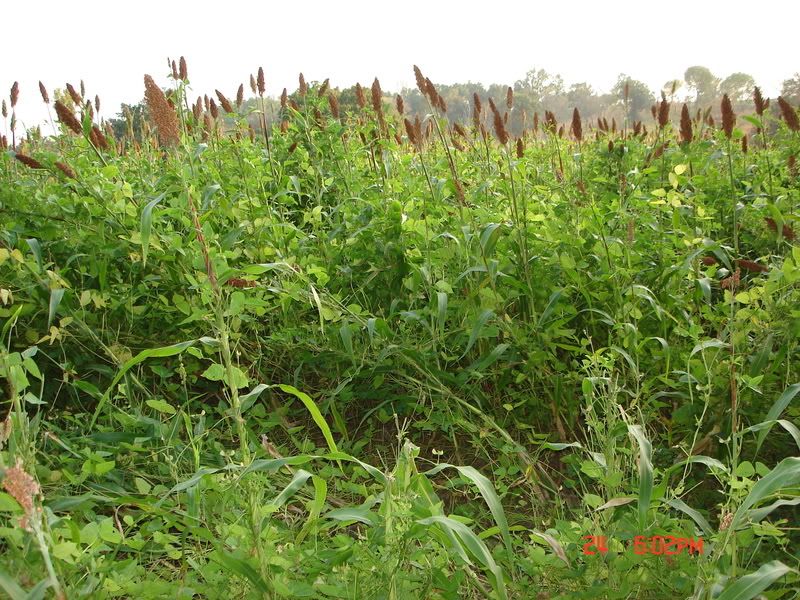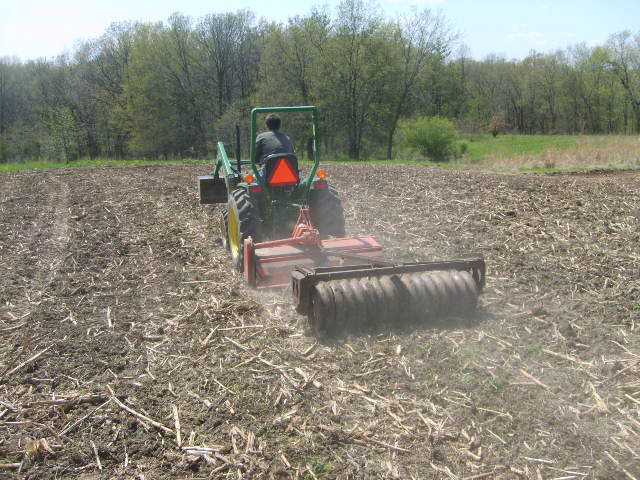Field pea progess as of June 28:
They are starting to flower but because we are getting into the heat of the summer, the pods may not fill well if at all.
This is why peas generally should be planted very early spring or mid summer so that they flower in cooler seasons.
The peas seem to grow well along with the forage oats but I have no idea how much growth to expect?
I found some that were nipped but nothing like the beating the soybeans planted right next to them are taking.
The peas look so much tastier to me then then the soybean plants so I am really surprised that they haven't been eaten to the ground?
If this doesn't change then field peas could prove to be a better option for high deer density areas but it's too soon to tell.
Here's a pic of a RR soybean and a field pea where they over lapped, both on June 28th approx 6 weeks after being planted
The forage oats and peas seem to go together real well and it appeared that the peas were starting to climb the oats in some places. If you look at the oat stems you can see where they had been grazed early on leaving a stem/stalk rather then a seed head.
Some peas were very pale and looked like they had not had enough moisture the week before?? We have had tons of rain but we also had a week and a 1/2 with no rain.
I get the feeling that peas need very fertile moist soils and cooler growing conditions while soybeans can endure dry spells and thrive in our very hot summers.
I'll be watching these spring planted peas to see if they set peas or not and will plant or re-plant another batch that will flower in the fall.
Ideally I would love to plant them mid August (ISU says late July) so that I could add oats and rye which would give me a "can't fail" combo for fall. If they flower at 6 weeks then that would mean the end of September and hopefully dried peas by late October but...I still have a lot to learn about field peas!

Here is more information about spring versus fall planting in SE Iowa...sounds like fall planted peas yield better then spring!
**Fawcett said they are experimenting with both spring- and fall-planted peas. He said peas in one field planted in October grew about twice as tall as the spring-planted peas, and yielded about five bushels per acre more than the spring-planted peas. He said he had hoped that fall-planted peas could be harvested a week or two sooner than spring-planted peas, but this year they both matured at about the same time.
**The above taken from the follwing link:
Field peas and Pigs
Select Max (clethodim) along with 1% crop oil can be used to control grasses in field peas at 9-16 ounces per acre.
Poast (sethoxydim) can be used at 0.5 to 1.5 pt also with 1% crop oil to control annual grasses.
2008 North Dakota Weed Control Guide
Select Max Label
These herbicides will kill the oats of course oats or rye will give the peas something to climb on.
Field Pea Production in ND
From that link a few notables:
The seeding rate will depend on the size of the seed.
Field pea varieties will range from 1,600 to 5,000 seeds
per pound. A plant population of 300,000 plants per acre
or seven to eight plants per square foot is recommended.
I used inoculate specifcally for peas...whew!

Producers must be certain that the
inoculum product they obtain is specific for field pea.
Use of an inoculum labeled for soybean, clover or other
legume will not allow the nitrogen fixation process to
occur.
I need to check this...perhaps N levels were to low intially??
Growers should check their fields to determine if
inoculation was successful. Normally, nodules will
form on the roots two to four weeks after emergence.
To check for nodulation, carefully dig up a number
of plants and gently clear the soil from the root mass.
Nodules will be present both on the primary root and on
the lateral roots. Effective nodules will have a pink to red
coloration on their interior. If nodulation does not occur
and soil nitrogen levels are low, an application of nitrogen
fertilizer over the top may be required to optimize seed
yields. Nitrogen fixation will take place from about
four weeks after emergence through seed formation.
This is consitant with what I have noticed so far...approx 6 weeks to flowering and two-four weeks of flowering. So it seems that mid August planting might at least be possible.
Field pea is well adapted to cool, semi-arid climates.
Field pea seed will germinate at a soil temperature of
40 degrees F. Emergence normally takes 10 to 14 days.
Field pea has hypogeal emergence in which the cotyledons
remain below the soil surface. Seedlings are tolerant to
spring frosts in the low 20s and if injured by frost,
a new shoot will emerge from below the soil surface.
Flowering usually begins 40 to 50 days after planting.
Flowering is normally two to four weeks, depending
on the flowering habit and weather during flowering.
























